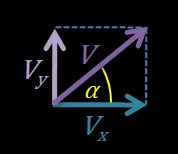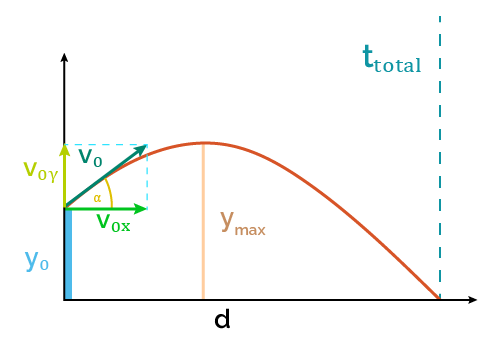Maximum Height Calculator - Projectile Motion
If you're searching for how to find the maximum height in projectiles, this maximum height calculator is what you need. This tool is a simplified version of our projectile motion calculator, which finds many other parameters using different projectile motion formulas.
Read on to know the maximum height formula this physics calculator uses!
Projectile motion formulas
To calculate the maximum height, we first must know the fundamental equations behind the projectile motion.
The following table contains the formulas that govern this form of motion:
Horizontal motion | x = x0 + Vxt |
Vx = V0x | |
Vertical motion | y = y0 + (1/2)(V0y + Vy)t |
Vy = V0y - gt | |
y = y0 + V0yt - gt2/2 | |
Vy2 = V0y2 - 2g(y - y0) |
In the previous table:
- t — time;
- x and y — Horizontal and vertical positions, respectively (at the time t);
- x0 and y0 — Initial horizontal and vertical positions;
- Vx and Vy — Horizontal and vertical velocities, respectively (at the time t);
- V0x and V0y — Initial horizontal and vertical velocities, respectively; and
- g — Gravity acceleration (9.807m/s2)
Usually, we don't know the horizontal and vertical velocity components in advance. As those components form right triangles with the initial total velocity (V0), we can calculate them using the following formulas:
- Horizontal velocity formula: V0x = V0 × cos(α)
- Vertical velocity formula: V0y = V0 × sin(α)
where α is the projectile angle of launch.
If the vertical velocity component is zero (α = 0°), then that's a case of horizontal projectile motion, and if α = 90°, that's a case of free fall.

Now, let's see how to find the maximum height.
Maximum height formula
The formula to calculate the maximum height of a projectile is:
- ymax = y0 + V0y²/(2g); or
- ymax = y0 + V02sin2α/(2g)
where:
- y0 — Initial height or vertical position;
- V0y — Initial vertical velocity;
- V0 — Initial total velocity (called initial velocity in the maximum height calculator);
- g — Gravity acceleration;
- α — Angle of launch; and
- ymax — Calculated maximum height;
And that's it! That's the maximum height formula for physics problems involving projectile motion.
